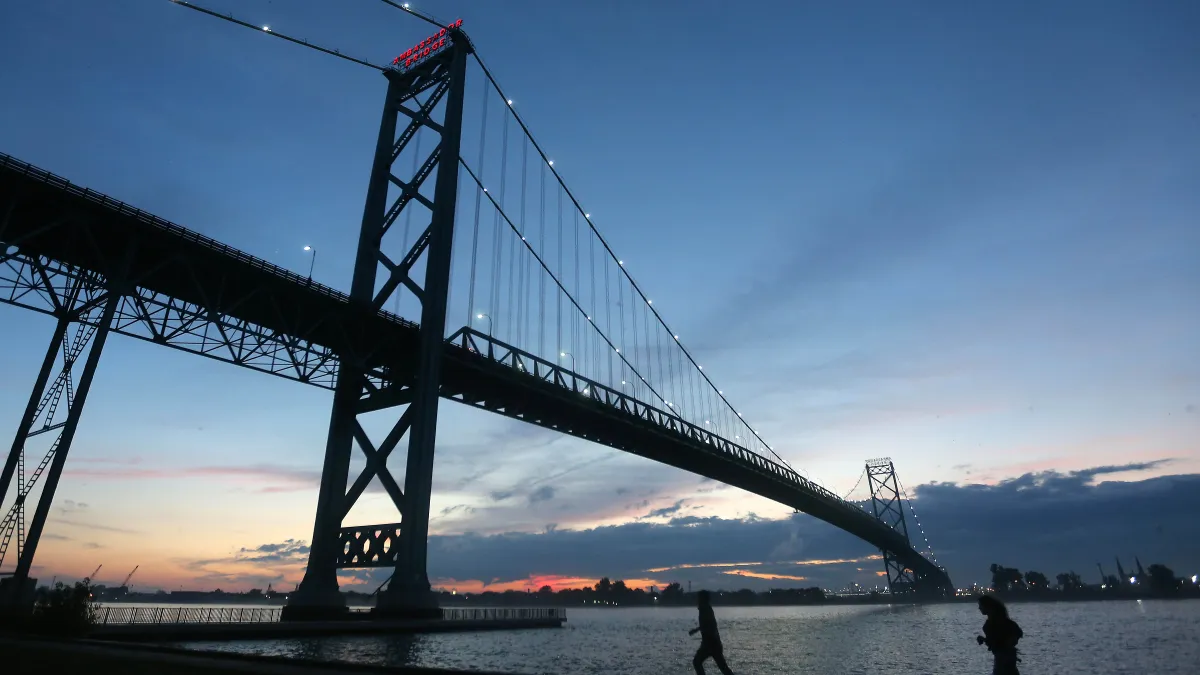Henry Cisneros is former secretary of the U.S. Department of Housing and Urban Development and former mayor of San Antonio, and serves as chairman at infrastructure fund manager American Triple I. William Fulton is director of the Kinder Institute for Urban Research at Rice University and former mayor of Ventura, CA.
The importance of investing in our infrastructure has been a frequent topic of national conversation for years, spanning multiple administrations, yet too often this talk has not been met with action.
Over the past year, as COVID-19 gripped our country, we were shown in clear and immediate ways why the subject of infrastructure is far from a political abstraction, impacting people’s lives directly and significantly, in every part of the country.
The recent winter storm in Texas, leaving millions without power and heat, imperiling health and safety, exacerbated by pandemic limits on travel and gatherings, was a crushing bookend to a year of struggle for so many.
Whether it is public transportation for essential workers to get to their jobs and provide lifesaving goods and services; children logging into virtual classrooms; millions working from home and relying on the power grid in ways they never had before; the use of parks and other large spaces during a time of social distancing; and, of course, the need for medical care in modern facilities and telemedicine to prevent overcrowding in hospitals — infrastructure is fundamental to how we live during this crisis and beyond.
In many places, this crucial infrastructure did not perform as it should have, exposing weaknesses and inequities that we must confront as we move through our current challenges and those of tomorrow.
Recently, the American Society of Civil Engineers (ASCE) released its quadrennial report on American infrastructure, giving the United States a C- grade, while noting a $2.6 trillion infrastructure investment gap, the highest level the group has ever measured.
Among its many noteworthy conclusions, the report found:
-
One in five school age children lacks a high-speed internet connection;
-
19% of all public transit vehicles were rated in "poor" condition and transit systems face a backlog of $176 billion in investment;
-
If not improved, conditions at ports and inland waterways will increase shipping costs by up to 22% over the next two decades;
-
There is a water main break every two minutes in the U.S., a loss of 6 billion gallons of drinking water a day;
-
53% of school districts must upgrade or replace HVAC systems, an essential component of safely returning children to school during this and future pandemics.
These are just a few examples. The inefficiencies, loss of productivity, and other effects of this underinvestment in infrastructure will cost each American family $3,300 a year by 2039, the ASCE report found, with multiplier effects throughout the economy.
For the most serious challenges we face — recovery from the pandemic, racial inequity and economic immobility, regional dispersal of opportunity, economic competitiveness, digital inequity and climate change — infrastructure must be part of the solution. It is not the only answer, but it is often a necessary condition to tackling these problems.
It is widely expected the Biden administration will pursue a major infrastructure plan. While we need the federal government to lead, we must avoid the tendency to take a top-down approach, where federal agencies prioritize what is funded according to inside-the-Beltway conventional wisdom, which is often heavily influenced by lobbying.
We need a new strategy. Cities and regions are the economic engines of our nation and are best positioned to identify the priorities that will address what the ASCE report found needs to be done.
To help initiate a more bottom-up approach, we recently conducted a survey of leaders in the 100 largest metropolitan areas and the 100 largest cities — a total of 134 places. Combining their responses with information from other sources, we developed a database of more than 1,800 projects that local and regional leaders have identified as high priority.
Transportation projects (37% of all projects) and public facilities (33%) — from clinics and hospitals to emergency service centers to parks — were the largest need. A full 20% of transportation projects were for public transit and more than half of all energy projects were for renewables.
In addition, three broad themes emerged:
-
Infrastructure needs revealed by the pandemic: 64% of respondents identified broadband as a priority and 55% identified local facilities, principally for health services.
-
Climate resilience: Roughly 30% fall into this category, including public transit, renewable energy, and clean water projects.
-
Creating economic connections between urban and rural communities, including power generation and intrastate transportation projects: About 17% of those identified in our survey address the urban-rural divide.
One of the most hopeful signals the Biden administration has sent is its appointments or nominations of state and local leaders for important infrastructure positions. Among them are Pete Buttigieg (Transportation), Marty Walsh (Labor), and Marcia Fudge (Housing and Urban Development), all of whom are former mayors. Likewise, Gina Raimondo (Commerce), Jennifer Granholm (Energy) and Tom Vilsack (Agriculture) are all former governors. And Miguel Cardona (Education) and Michael Regan (Environmental Protection) served in analogous leadership roles in their states.
Balancing the infrastructure plans that come out of Washington, D.C. with the knowledge and understanding of what is needed in our communities, cities, counties and states, will help us make key investments that will position our economy for the future, and cure some of the ills exposed by our present.
Contributed pieces do not reflect an editorial position by Smart Cities Dive.
Do you have an opinion on a similar issue or another topic Smart Cities Dive is covering? Submit an op-ed.



















